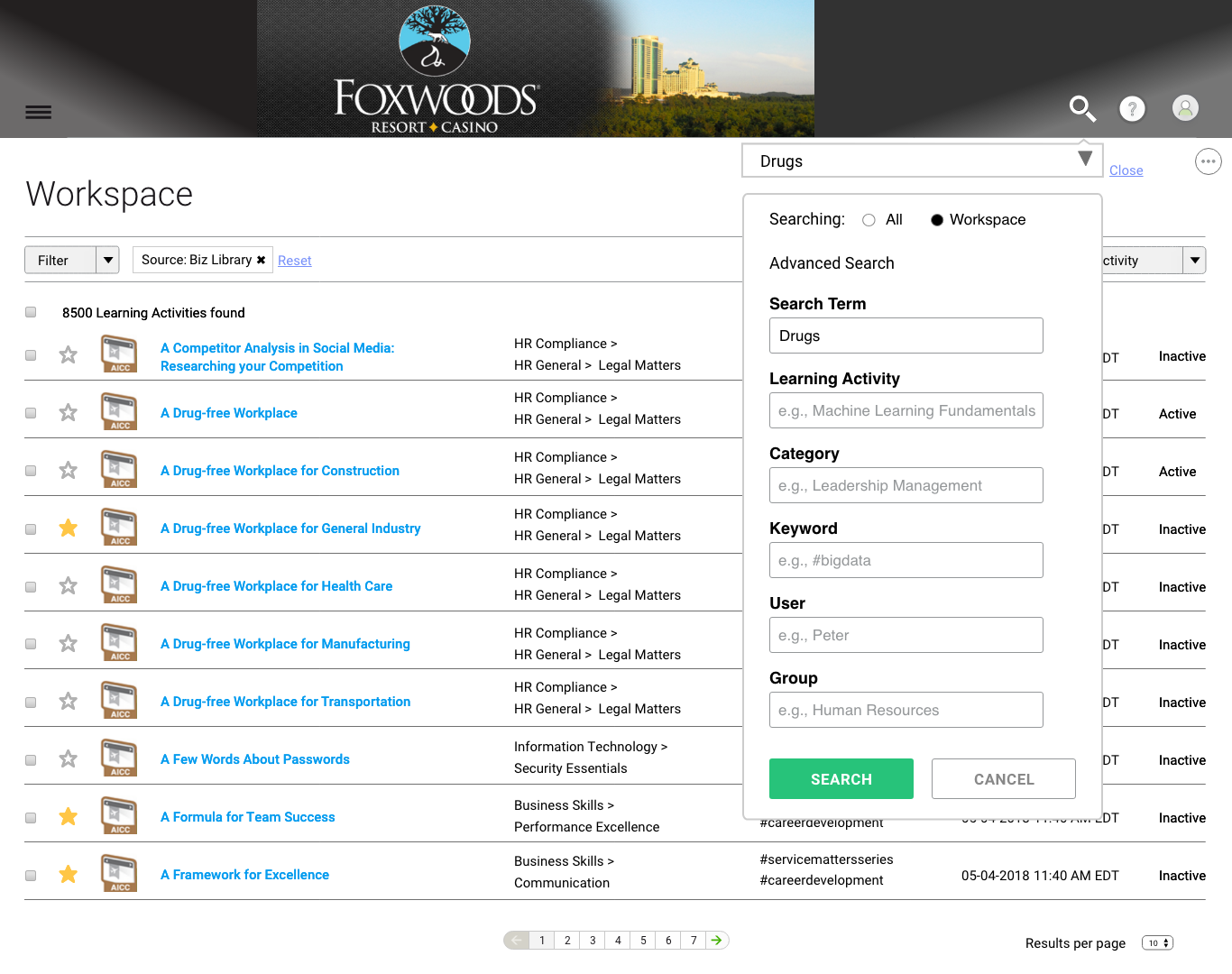…when Together.
When a system successfully integrates with off the shelf content repositories, it acts as the storage engine for a larger application and allows many applications to work with the same content without interrupting the data, resulting in a richer environment for users.
Product Name: ePath Learning nGage
ePath Learning nGage™ is a validated compliance training LMS solution developed specifically for regulated companies including life sciences, pharmaceutical and medical device organizations. nGage LMS helps to alleviate the administrative struggles and technical burdens typically associated with delivering complex, organization-wide compliance training programs.
Feature:
Adding ‘Off the Shelf Content Repositories’ into the Learning Workspace and Merging It With ‘Existing Content’
Challenge:
Admins have access to a Workspace where they may manage all the Learning Activities created in the LMS platform. Workspace has labeling, filtering, and sorting capabilities unique to its environment. In a typical Workspace, there may be hundreds of Learning Activities.
The challenge arises when an off-the-shelf content repository such as BizLibrary is merged with the system. BizLibrary has approximately 8500 courses. Adding a few of these libraries result in tens of thousands of new Learning Activities displayed in the Workspace all of a sudden, apart from Client-created content that already exists in the Workspace.
In the redesigned version:
- admin should be able to see which Learning Activities are created in the LMS and which are imported from a library,
- admin should find a way to mark Learning Activities that are important to them in order to view them easily,
- admin should find a way to filter out Learning Activities that are not in use so as to minimize page count,
- filtering and sorting capabilities should be redesigned, and work seamlessly,
- platform conventions such as wording, labeling and categorization should have consistency and standards,
- search results should be very efficient and display the most appropriate content to the user.
Result:
The last challenge on the redesigned version regarding the search functionality was an important feature in itself. I was already working on designs to improve the efficiency of the search functionality for the whole LMS as another project. I got approval to incorporate the ‘search functionality’ designs with the ‘content repository’ project, and present the new search functionality along with this ongoing project during the executive meeting. The finalized designs you may view in the clickable prototype includes not only the approved ‘content repository’ designs but also the new search functionality as well.
I also completed designs on how Content Repository settings such as allocation of licenses should be handled in the Portal Settings Configuration page, and added the related mockups to the clickable prototype.
I want to point out that, UX solutions within a Learning Management System may be quite complex, especially for someone new to an LMS. The ideal way to understand the reasoning behind these features I created would be to go over these prototypes as I explain them in full detail. Still, the clickable prototype may give an idea about the projects I’ve been working on.

